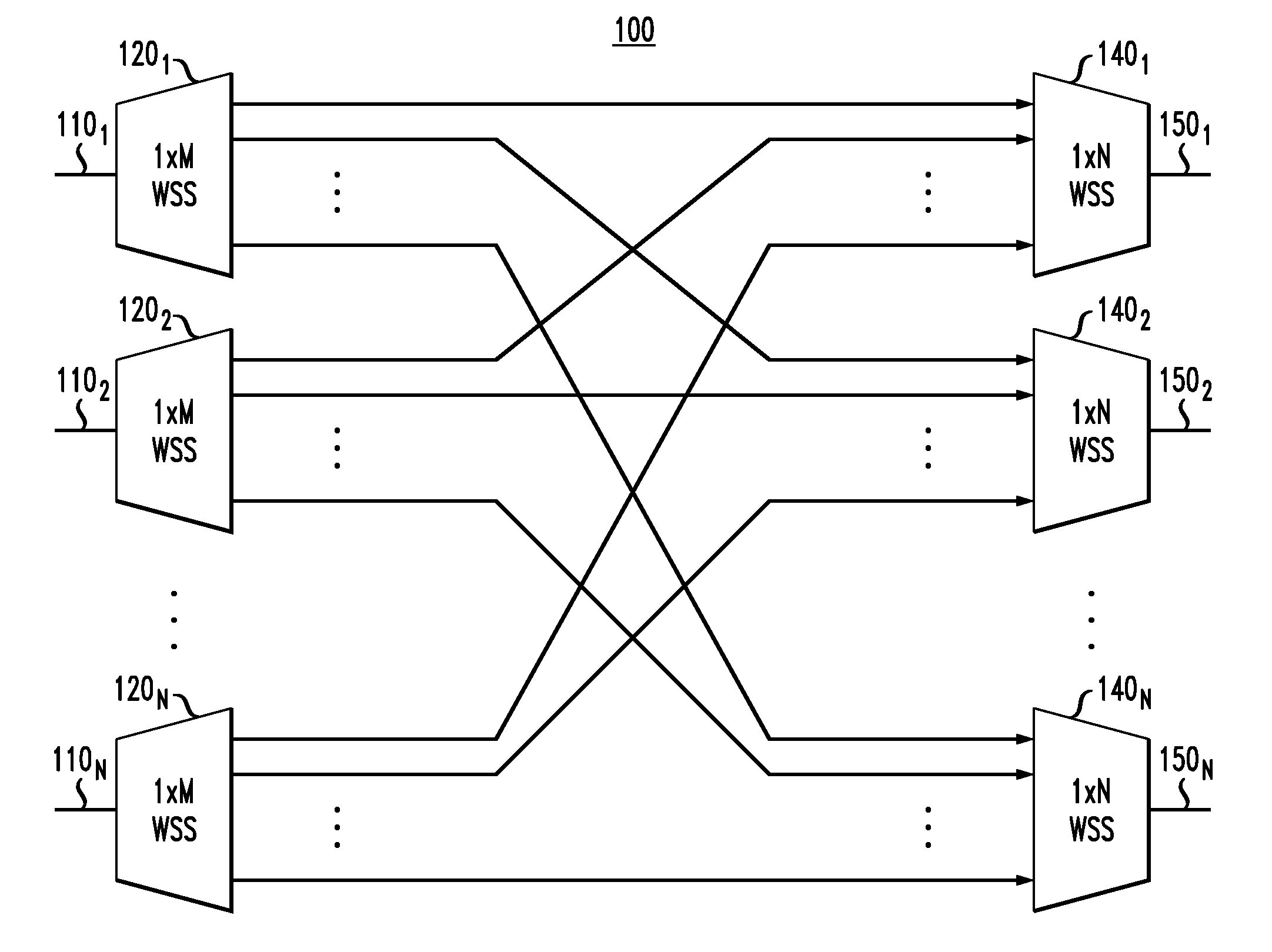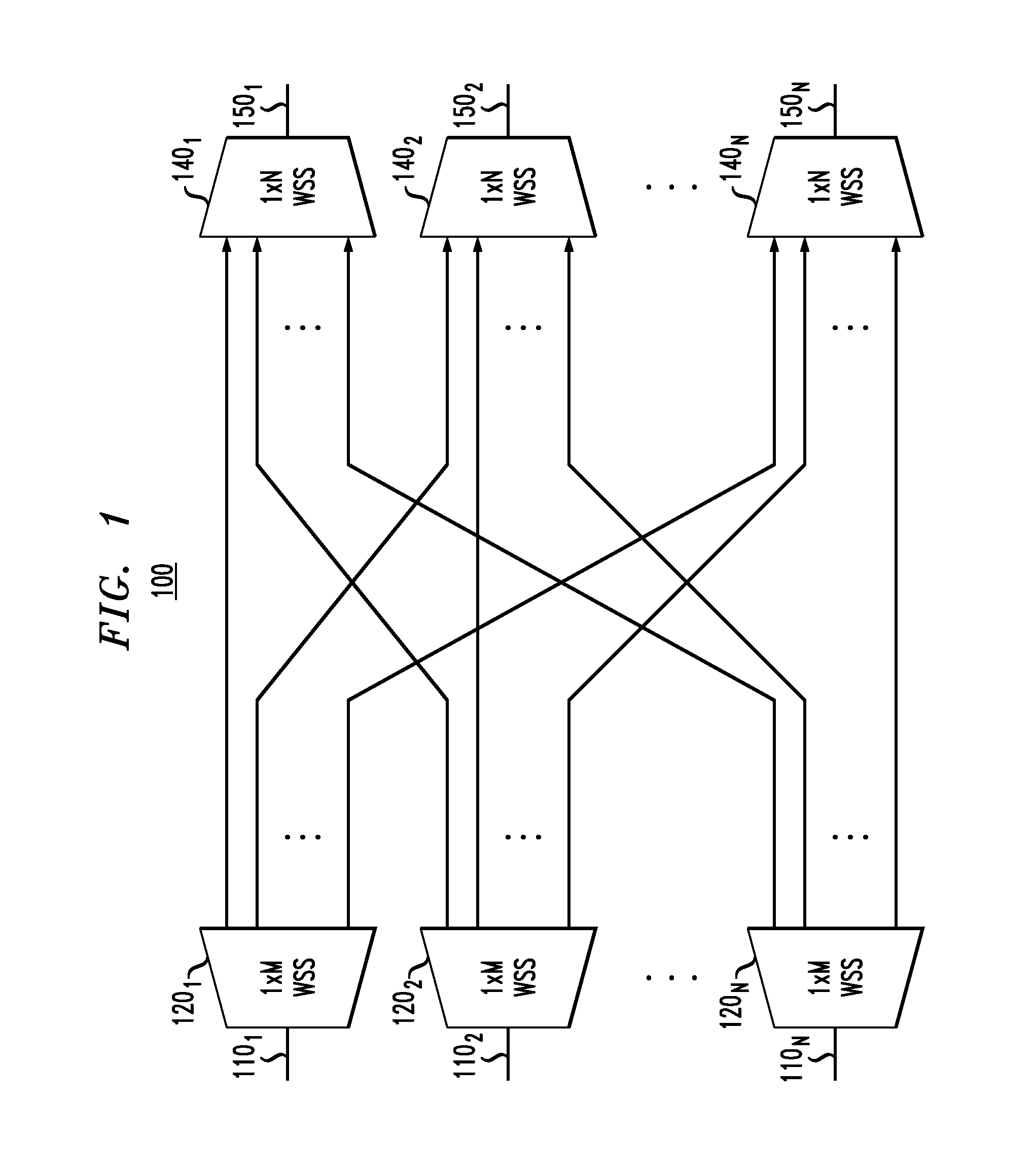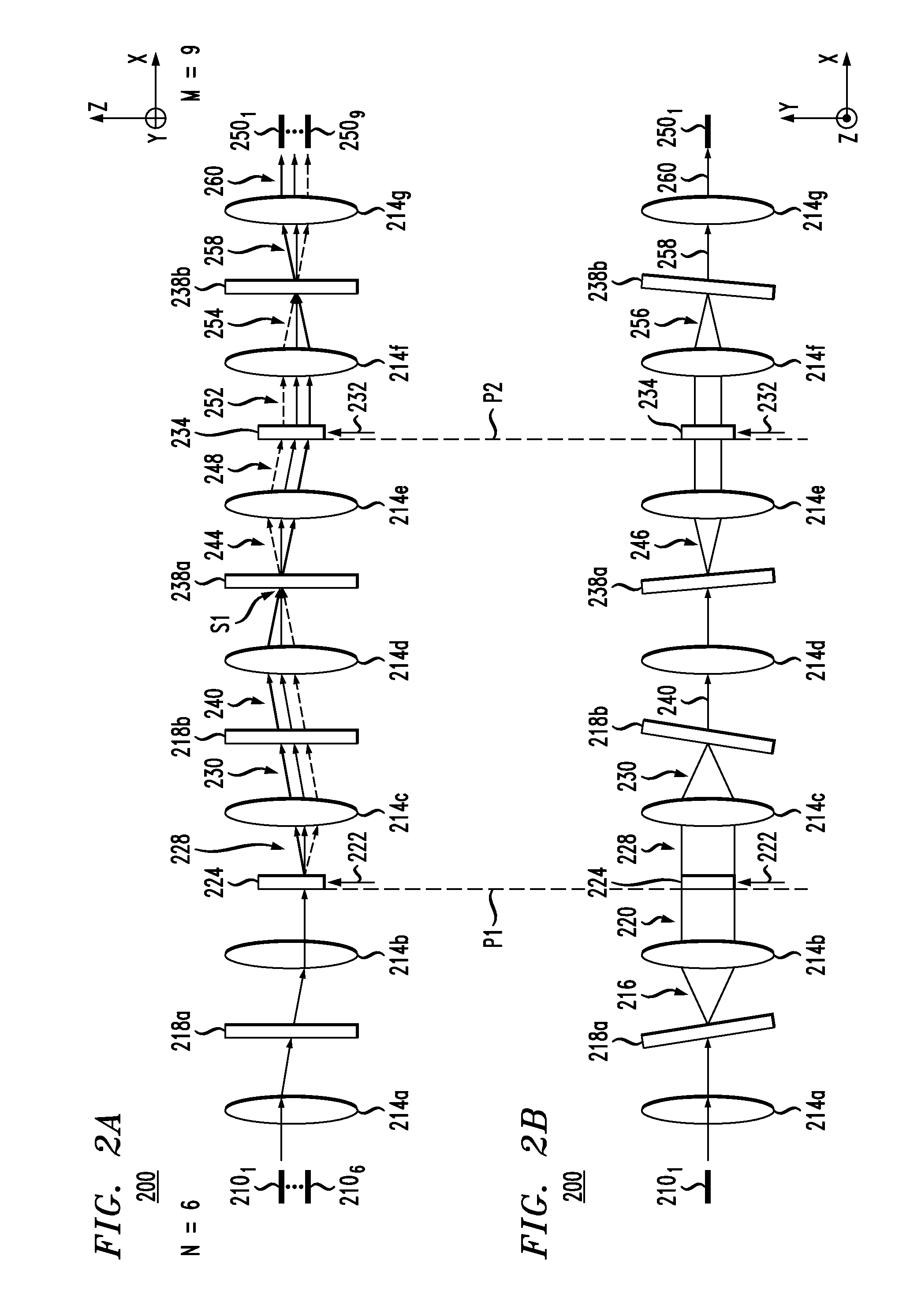Compact wavelength-selective cross-connect device having multiple input ports and multiple output ports
a cross-connect device, wavelength-selective technology, applied in multiplex communication, optical elements, instruments, etc., can solve the problems of increasing the footprint of the conventional wsxc device, relatively high maintenance complexity and cost, and achieve flexible wavelength channel center and width assignment, small footprint, and good scalability characteristics
- Summary
- Abstract
- Description
- Claims
- Application Information
AI Technical Summary
Benefits of technology
Problems solved by technology
Method used
Image
Examples
Embodiment Construction
[0034]FIG. 1 shows a block diagram of a device 100 that illustrates representative functionality of a wavelength-selective cross-connect (WSXC) device according to one embodiment of the disclosure. Device 100 has N input ports 1101-110N and M output ports 1501-150M, where N and M are (either the same or different) integers greater than one. In a representative configuration, each of input ports 110 and output ports 150 has a respective optical fiber (not explicitly shown in FIG. 1) connected to it. In operation, each of these optical fibers is configured to transport a respective WDM signal. In principle, each of the transported WDM signals can have an arbitrary number of WDM components (modulated carrier wavelengths), with the total number K of unique carrier wavelengths that are being handled by device 100 being independent of N and / or M.
[0035]Device 100 is shown as having N (1×M) wavelength-selective switches (WSSs) 1201-120N and M (1×N) wavelength-selective switches (WSSs) 1401-...
PUM
 Login to View More
Login to View More Abstract
Description
Claims
Application Information
 Login to View More
Login to View More - R&D
- Intellectual Property
- Life Sciences
- Materials
- Tech Scout
- Unparalleled Data Quality
- Higher Quality Content
- 60% Fewer Hallucinations
Browse by: Latest US Patents, China's latest patents, Technical Efficacy Thesaurus, Application Domain, Technology Topic, Popular Technical Reports.
© 2025 PatSnap. All rights reserved.Legal|Privacy policy|Modern Slavery Act Transparency Statement|Sitemap|About US| Contact US: help@patsnap.com



